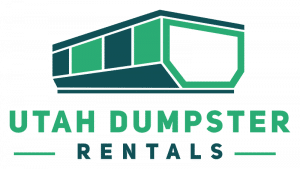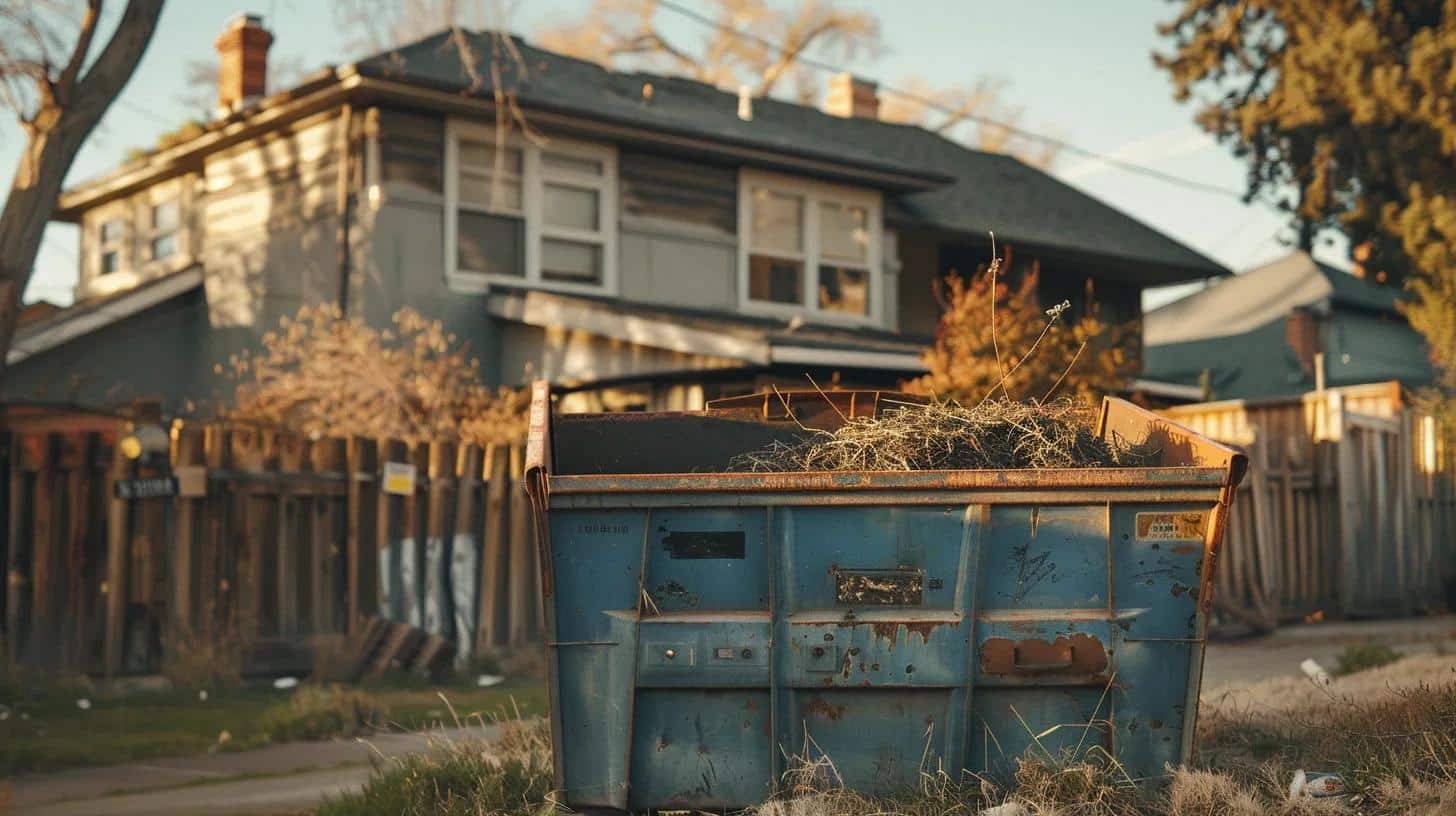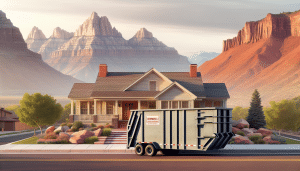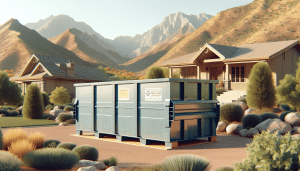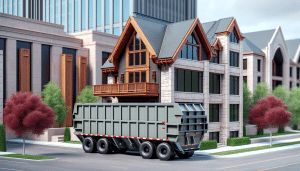Roll-off dumpster rentals are the practical backbone of any cleanup, remodel, or build in Ogden, offering a simple temporary container to collect and haul debris without the back-and-forth of bagging and hauling yourself. This guide explains how to choose the right size, what typical costs look like in Ogden, and the rules you need to know so your project — whether a garage cleanout or a small demo — stays on schedule and on budget. You’ll get clear comparisons of the 15 yard dumpster Ogden, 20 yard dumpster Ogden, and 30 yard dumpster Ogden, plus tips for driveway protection, permits, and responsible disposal at local facilities like the Weber County Transfer Station. Utah Dumpster Rentals is a local option for same-day delivery and flat-rate pricing if you want a quick, no-surprises example while you read through the practical how-to below.
Contents
- 1 What Are the Best Roll Off Dumpster Sizes for Your Ogden Project?
- 2 How Much Do Dumpster Rentals Cost in Ogden, UT?
- 3 Which Dumpster Rental Services Are Available for Residential, Commercial, and Construction Needs in Ogden?
- 4 What Are Ogden’s Dumpster Permit Requirements and Waste Disposal Rules?
- 5 Conclusion
What Are the Best Roll Off Dumpster Sizes for Your Ogden Project?
A roll-off dumpster size choice comes down to volume, weight, and where you can place the container; it’s essentially matching container capacity to project scope so you don’t overpay or run out of space.
For clarity, think of dumpster size as a box measured by cubic yards and placement constraints — that mechanism drives the benefit of fewer trips, safer sites, and faster cleanups.
Below is a compact comparison to help you visualize the differences and pick the right match for typical Ogden jobs like yard waste during spring cleanup or demo debris from a small remodel. After this quick table, there are short examples of when each size shines and placement tips you can use on narrow residential driveways.
Introductory comparison of common roll-off sizes in Ogden:
| Size | Dimensions / Capacity | Typical Uses |
|---|---|---|
| 15-yard | ~12′ L × 8′ W × 4′ H — ~10 pickup loads | Garage cleanouts, small remodels, bulky household junk |
| 20-yard | ~16′ L × 8′ W × 4.5′ H — ~14 pickup loads | Kitchen or bathroom remodels, medium deck tear-out |
| 30-yard | ~22′ L × 8′ W × 6′ H — ~20+ pickup loads | Larger renovations, multi-room demo, contractor jobs |
This table shows how each size scales in capacity and common uses, so you can match volume to project needs and avoid overfilling. Next, we’ll walk through real-world cues for choosing the 15-yard option first.
When Should You Choose a 15-Yard Dumpster for Residential or Small Jobs?
The 15-yard roll-off is compact, driveway-friendly, and ideal when you’re clearing a single room, a garage, or seasonal yard debris — it’s essentially the smallest workhorse for homeowners.
Mechanically, it minimizes driveway footprint while still holding roughly ten pickup-truck loads, which means fewer shuffle-and-haul trips for you and less risk of blocking neighbors’ access.
Practically, choose a 15-yard if your project fits into one to two pickup loads of debris, or when site access is tight and you want to protect lawn and driveway surfaces. For placement, consider plywood under the wheels and a level spot; that placement advice leads naturally into why a 20-yard is most homeowners’ next step.
How Does a 20-Yard Dumpster Fit Medium Renovations and Junk Removal Needs?
A 20-yard dumpster hits the sweet spot for many Ogden homeowners because it balances capacity and footprint, making it versatile for kitchen remodels or whole-house cleanouts without requiring commercial placement.
The mechanism here is simple: more volume for bulky items like cabinetry means you avoid the underestimation trap that forces extra rentals. Choose a 20-yard when you foresee mixed debris — drywall, old cabinets, and moderate amounts of heavy material — and plan for an accessible curb or driveway drop-off. Understanding that weight and composition affect how full you can safely load guides the next decision between mid- and large-size units.
How Much Do Dumpster Rentals Cost in Ogden, UT?
Typical roll-off dumpster rentals in Ogden run within a clear flat-rate range, influenced mainly by size, rental duration, and debris type; in brief, expect an affordable flat-rate that bundles delivery, pickup, and disposal into one predictable price.
Price transparency matters because it prevents surprise overage fees, and the flat-rate model simplifies budgeting by including primary service meronyms like delivery, pickup, and a standard weight allowance.
Below is a quick breakdown of pricing components to help you decode quotes and understand what’s optional versus included.
| Price Component | What’s Included | Notes / Variations |
|---|---|---|
| Delivery / Pickup | Transport to/from site | Same-day deployment options vary by provider |
| Disposal Fees | Hauling to transfer station | Varies with debris type (heavy vs. light) |
| Weight Allowance | Base tonnage included | Overage charges apply for heavy materials |
This table clarifies typical inclusions so you can compare quotes apples-to-apples and avoid hidden costs. Next, we look at what exactly a flat-rate covers in practice.
What Is Included in Flat-Rate Dumpster Rental Pricing?
Flat-rate dumpster rental pricing usually packages delivery, pickup, a standard disposal allowance, and a set number of days for the rental period; the mechanism of bundling reduces surprise charges and simplifies scheduling.
For example, a flat-rate covers the drop-off and haul-away logistics that otherwise create administrative headaches, and it often includes a weight allowance that specifies how much material you can toss before overage fees apply.
In practice, mention your debris mix when asking for a quote — say you have concrete or shingles — because heavy materials trigger different disposal pathways. That practical tip about declaring debris type naturally leads into how rental duration and debris specifics change price.
How Do Rental Duration and Debris Type Affect Dumpster Rental Prices?
Rental duration and debris composition are the two key variables that adjust your final price: longer durations often get prorated rates while heavy or hazardous debris attracts surcharges.
The rule of thumb is simple — the longer you keep a container, the more the rental portion contributes to the price, but disposal and weight surcharges remain the biggest wildcards.
Ask upfront about daily versus weekly rates and whether the company offers extensions or roll-off rotation for long projects to keep costs predictable. Knowing these variables helps you estimate total cost before work begins and connects directly to choosing the right service category next.
Common cost drivers to watch:
- Size: Larger dumpsters have higher base rates.
- Debris type: Heavy materials increase disposal fees.
- Duration: Longer rentals may raise the overall cost.
This short list helps you prioritize questions when you request quotes; for a transparent example of flat-rate pricing that includes delivery, pickup, disposal, and a weight allowance, Utah Dumpster Rentals provides that model with same-day options and phone support.
Which Dumpster Rental Services Are Available for Residential, Commercial, and Construction Needs in Ogden?
Dumpster rental services are categorized by use-case — residential, commercial, and construction — and each category aligns with specific size and scheduling needs to keep sites tidy and compliant.
The broader service hypernym is a temporary waste container solution, and the meronyms like delivery, pickup, and scheduling differentiate providers operationally.
Below is a small table mapping service type to typical rental periods so you can match your timeline to the right offering; after the table, practical service tips and what to prepare for delivery are included.
| Service Type | Best For | Typical Rental Periods |
|---|---|---|
| Residential | Home cleanouts, yard work | 3–7 days |
| Commercial | Retail or office cleanups | Weekly or recurring pickups |
| Construction | Remodels, demos | Multi-week with rotation options |
This quick mapping helps you choose the right service style and rental cadence, and it sets up the specific residential tips next.
What Residential Dumpster Rentals Are Ideal for Home Cleanouts and Yard Waste?
For homeowners, pick a size that matches the project scope and plan placement to protect surfaces — driveway-friendly 15- or 20-yard units are common choices for seasonal yard work and interior cleanouts.
Mechanically, residential drops are all about minimizing disruption: use plywood under the dumpster feet, choose a flat spot, and clear the area for delivery drivers who need 10–20 feet of clear approach space.
Seasonal timing matters in Ogden — spring yard cleanups and fall decluttering see higher demand — so call early if you want same-day or next-day delivery, and verify driveway protections with your provider.
These prep steps segue into what commercial and construction customers should plan for.
- Residential prep checklist:
Protect driveway with plywood or mats.Clear access route for delivery.Separate recyclables where possible.
How Do Commercial and Construction Dumpster Rentals Support Business and Project Cleanup?
Commercial and construction clients often need larger capacities, scheduled pickups, and permit coordination to keep a site safe, efficient, and compliant; the operational benefit is steady waste flow control so work progresses without pause.
For contractors, consider sequencing dumpsters to match demolition phases and track weight to avoid excess disposal fees, while businesses may prefer scheduled, recurring pickups to keep storefronts tidy.
Logistics tips include assigning a site contact for coordination and noting overhead clearance for crane or lift-in work if relevant.
These operational practices point directly to permit and disposal rules you’ll need to follow in Ogden.
What Are Ogden’s Dumpster Permit Requirements and Waste Disposal Rules?
You generally need a permit in Ogden when a dumpster occupies public right-of-way or curb space; on private property, permits are usually unnecessary but local rules can vary, so always check the trigger conditions first.
This yes/no-style lead clarifies the core rule: permit required for public placements, not typically for private-driveway drops, and the reason is liability and public access control.
Below are actionable steps to verify permits and a short prohibited-items list with local disposal options to keep your project compliant and environmentally responsible.
Steps to check and obtain permits:
- Identify placement: Determine if the dumpster will sit on public property or private property.
- Contact local permitting: Verify permit needs with the city or ask your rental provider for guidance.
- Obtain and display permit: If required, secure the permit before placement and keep it accessible.
These steps help you avoid fines and scheduling delays; if you’d prefer hands-on help, Utah Dumpster Rentals can assist with permit guidance and provide a free quote or phone support to walk through the requirements.
When Do You Need a Permit to Place a Dumpster in Ogden, UT?
Yes — a permit is typically required when a dumpster will occupy a public sidewalk, street, or other public right-of-way because city rules protect pedestrian access and traffic flow.
The process usually involves confirming placement details, submitting a brief application or notification, and adhering to time-of-day restrictions; your rental provider can often help by advising whether your planned drop triggers a permit.
If you’re unsure, treat the provider as a resource: they can often advise on the permit threshold or suggest private-placement alternatives to avoid the extra step.
Knowing when permits apply leads naturally into what you must avoid putting in the dumpster.
What Items Are Prohibited in Roll Off Dumpsters and How to Dispose of Them Responsibly?
Certain hazardous and restricted items should never go into roll-off dumpsters, and responsible disposal means using designated local channels like the Weber County Transfer Station or scheduled hazardous waste events.
Typical prohibited items include automotive fluids, tires, batteries, paints, and certain electronics — these require specialized disposal routes to prevent soil and water contamination.
Local alternatives include transfer station drop-off, municipal recycling programs, or hazardous waste days organized by Ogden City; ask your rental provider for recommendations if you have mixed or borderline materials.
For permit help or advice on proper disposal options, Utah Dumpster Rentals offers phone support seven days a week to guide you through the process.
- Common prohibited items:
Paints, solvents, and chemicals.Tires and vehicle fluids.Batteries and compressed gas cylinders.
These examples and local disposal options protect the environment and reduce the risk of surcharge fees or rejection at the transfer facility.
Conclusion
Choosing the right roll-off dumpster rental in Ogden can streamline your cleanup project, ensuring efficiency and cost-effectiveness. Understanding the various sizes, pricing structures, and local regulations empowers you to make informed decisions that align with your specific needs. For a hassle-free experience, consider reaching out to Utah Dumpster Rentals for expert guidance and competitive pricing. Start your project today by exploring our range of dumpster rental options tailored for every job.
